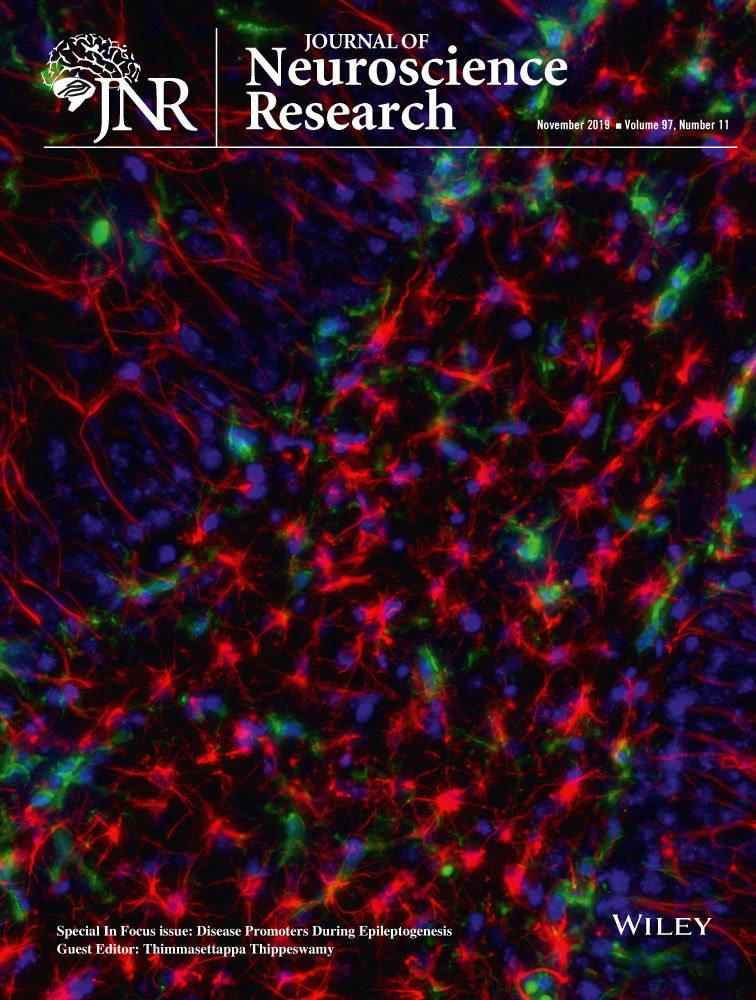In Focus: Disease promoters during epileptogenesis
This In Focus issue interrogates how glia, immune cells, and neurons contribute to epileptogenesis, the process of development of epilepsy. Epilepsy is a chronic debilitating neurological disorder of humans worldwide, affecting both men and women of all ages. The lifetime prevalence of epilepsy worldwide is ~2% (>65 million people). According to the Centers for Disease Control and Prevention (CDC) report, about 10% of Americans experience a seizure during their lifetime and ~3% of those that experienced their first seizure go on to develop epilepsy during their lifetime. CDC’s 2017 press release (“More Americans have epilepsy than ever before”) reveals that the number of U.S. adults and children with epilepsy is increasing, with at least 3.4 million people living with the disorder (https://www.cdc.gov/media/releases/2017/p0810-epilepsy-prevalence.html). Despite a significant progress in epilepsy research, the precise mechanism of epileptogenesis that follows an insult such as trauma, exposure to neurotoxic chemicals, infection, or gene mutation are still largely unknown.
Traditionally, neuronal hyperexcitability is attributed as the major cause or consequence of epileptogenesis. Antiepileptic drugs (AEDs) development strategies for epilepsy focused on targeting the ion channels that excite neurons (antagonists) or promote the inhibitory neurons function (agonists) to dampen hyperexcitability. The goal of AED treatment is to achieve freedom from seizures without any adverse effects. More than 20 second-generation AEDs were developed and marketed in the past three decades to achieve this goal, while more than 45 other AEDs failed in clinical trials due to lack of efficacy and severe side effects (Bialer et al., 2017; Temkin, 2001). Despite these efforts, ~1/3 of people with epilepsy (PWE) do not respond to the current AEDs for unknown reasons (Kwan and Brodie, 2000; Kwan et al., 2011). Although ion channel-targeted AEDs control symptomatic seizures in 2/3 of PWE, the majority of them do not effectively target seizure-induced brain pathology, especially in acquired temporal lobe epilepsy (TLE), the most common type of all epilepsies (Rzezak et al., 2016). These findings suggest the need for development of drugs that target alternative pathways to cure/modify epilepsy. TLE precedes neuroinflammation (reactive gliosis and proinflammatory cytokine/chemokines), nitrooxidative stress, neurodegeneration, and increased epileptiform spiking (disease promoters), which persist even after the disease is established (Putra et al., 2019; Puttachary et al., 2016). Therefore, developing therapeutic drugs that target the disease promoters may address the current gap in epilepsy.
In this In Focus issue, the contributing authors present recent evidence and novel approaches to identify potential therapeutic targets that promote epileptogenesis and progression of the disease. Neuberger et al. (Neuberger et al., 2017) highlights the mechanism of epileptogenesis in a traumatic brain injury model. The article discusses the role of mammalian target of rapamycin (mTOR) pathway in neurogenesis, neurovascular interactions mediated by vascular endothelial growth factor (VEGF), and HMGB1-TLR4 neuroimmune pathway. These pathways play a major role in early brain pathogenesis, including increased excitability, activated immune signaling, neurodegeneration, and enhanced neurogenesis within a week of injury, during which the insult may promote increased risk for the development of epilepsy. Eid et al. (2018) review the role of astrocytes in epilepsy development, with a special emphasis on astrocyte pathologies related to aquaporin 4, the inwardly rectifying potassium channel Kir4.1, monocarboxylate transporters MCT1 and MCT2, excitatory amino acid transporters EAAT1 and EAAT2, and glutamine synthetase. Sharma et al. (2017) review the role of glial source of nitric oxide (NO) in promoting epileptogenesis. Finally, Tse et al. (2019) presents data on altered proteome levels during epileptogenesis, using the mouse kainate model, and the impact of inhibiting the inducible NO synthase (iNOS) with 1400W and blocking the postsynaptic density protein 95 (PSD95)—a scaffolding protein that mediates the downstream effects of neuronal hyperexcitability—with a blocking peptide (Tat-NR2B9c) on proteomes in the hippocampus. In summary, the potential therapeutic targets proposed in this In Focus are inducible nitric oxide synthase (iNOS), PSD95, HMGB1/TLR4, mTOR, VEGF, and glutamine synthetase. The investigational new drugs that engage some of these targets provide proof-of-concept for their role in disease modification in epilepsy in animal models (see, for example, (Putra et al., 2019; Puttachary et al., 2016; Xu et al., 2019; Pauletti et al., 2019)).




